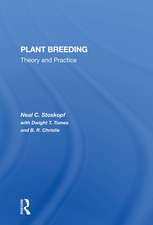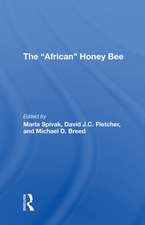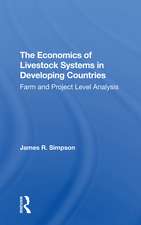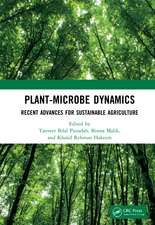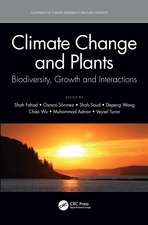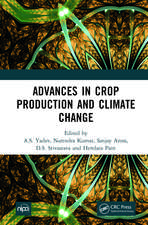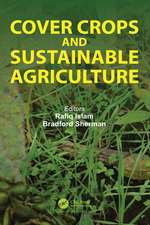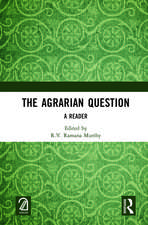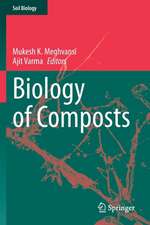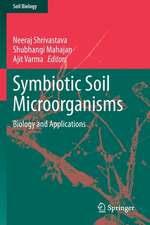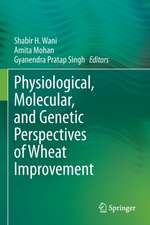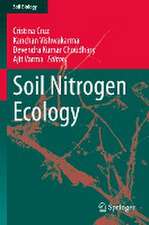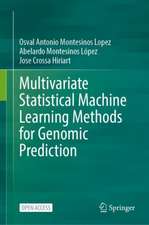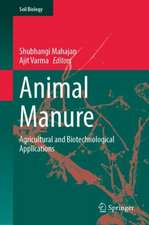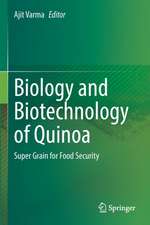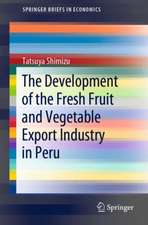Diversity and Biotechnology of Ectomycorrhizae: Soil Biology, cartea 25
Editat de Mahendra Rai, Ajit Varmaen Limba Engleză Paperback – 2 ian 2013
| Toate formatele și edițiile | Preț | Express |
|---|---|---|
| Paperback (1) | 1051.27 lei 38-44 zile | |
| Springer Berlin, Heidelberg – 2 ian 2013 | 1051.27 lei 38-44 zile | |
| Hardback (1) | 1229.40 lei 6-8 săpt. | |
| Springer Berlin, Heidelberg – 16 noi 2010 | 1229.40 lei 6-8 săpt. |
Din seria Soil Biology
- 18%
 Preț: 958.56 lei
Preț: 958.56 lei - 18%
 Preț: 1225.62 lei
Preț: 1225.62 lei - 18%
 Preț: 957.75 lei
Preț: 957.75 lei - 18%
 Preț: 1232.09 lei
Preț: 1232.09 lei - 18%
 Preț: 949.90 lei
Preț: 949.90 lei - 18%
 Preț: 1392.95 lei
Preț: 1392.95 lei - 18%
 Preț: 952.26 lei
Preț: 952.26 lei - 18%
 Preț: 1231.32 lei
Preț: 1231.32 lei - 18%
 Preț: 956.03 lei
Preț: 956.03 lei - 18%
 Preț: 948.29 lei
Preț: 948.29 lei - 18%
 Preț: 1224.18 lei
Preț: 1224.18 lei - 18%
 Preț: 1226.90 lei
Preț: 1226.90 lei - 18%
 Preț: 952.26 lei
Preț: 952.26 lei - 18%
 Preț: 942.63 lei
Preț: 942.63 lei - 18%
 Preț: 946.55 lei
Preț: 946.55 lei - 18%
 Preț: 1221.20 lei
Preț: 1221.20 lei - 18%
 Preț: 1225.94 lei
Preț: 1225.94 lei - 18%
 Preț: 946.24 lei
Preț: 946.24 lei - 18%
 Preț: 1221.02 lei
Preț: 1221.02 lei - 18%
 Preț: 947.98 lei
Preț: 947.98 lei - 18%
 Preț: 948.47 lei
Preț: 948.47 lei - 18%
 Preț: 1222.31 lei
Preț: 1222.31 lei - 18%
 Preț: 1231.64 lei
Preț: 1231.64 lei - 18%
 Preț: 1225.31 lei
Preț: 1225.31 lei - 18%
 Preț: 1229.73 lei
Preț: 1229.73 lei
Preț: 1051.27 lei
Preț vechi: 1383.25 lei
-24% Nou
Puncte Express: 1577
Preț estimativ în valută:
201.16€ • 210.02$ • 166.49£
201.16€ • 210.02$ • 166.49£
Carte tipărită la comandă
Livrare economică 01-07 aprilie
Preluare comenzi: 021 569.72.76
Specificații
ISBN-13: 9783642266027
ISBN-10: 3642266029
Pagini: 476
Ilustrații: XVI, 459 p.
Dimensiuni: 155 x 235 x 25 mm
Greutate: 0.67 kg
Ediția:2011
Editura: Springer Berlin, Heidelberg
Colecția Springer
Seria Soil Biology
Locul publicării:Berlin, Heidelberg, Germany
ISBN-10: 3642266029
Pagini: 476
Ilustrații: XVI, 459 p.
Dimensiuni: 155 x 235 x 25 mm
Greutate: 0.67 kg
Ediția:2011
Editura: Springer Berlin, Heidelberg
Colecția Springer
Seria Soil Biology
Locul publicării:Berlin, Heidelberg, Germany
Public țintă
ResearchCuprins
The importance of ectomycorrhizas for the growth of dipterocarps and the efficacy of ectomycorrhizal inoculation schemes.- The ectomycorrhizal symbiosis in South America: Morphology, colonization and diversity.- Ectomycorrhizal inoculum and inoculation techniques.- Systematic and ecology of tropical ectomycorrhizal fungi using molecular approaches.- The molecular ectomycorrhizal fungus essence in association: a review of differentially expressed fungal genes during symbiosis formation.- Agrobacterium tumefaciens-mediated transformation of ectomycorrhizal fungi.- Biotechnological processes used in controlled ectomycorrhizatio practices.- Signalling in ectomycorrhizal symbiosis establishment.- RNA silencing in ectomycorrhizal fungi.- Ectomycoremediation: An eco-friendly technique for the remediation of polluted sites? - Metal elements and the diversity and function of ectomycorrhizal communities.- A conceptual framework for up-scaling ecological processes and application to ectomycorrhizal fungi.- Mycobioindication of stress in forest ecosystems.- Effect of pesticides on the growth of ectomycorrhizal fungi and ectomycorrhiza formation.- Metal- chelating agents from ectomycorrhizal fungi and their biotechnological potential.- Ectomycorrhiza and secondary metabolites.- C:N interactions and the cost: benefit balance in ectomycorrhizae.- Ectomycorrhizal interaction between Cantharellus and Dendrocalamus.- Edible ectomycorrhizal fungi: Cultivation, conservation and applications.
Textul de pe ultima copertă
Ectomycorrhizal fungi play multifunctional roles during symbioses with higher plants. They can serve as bioprotectors, biofertilizers, bioremediators and stress indicators. Further, they are the true “mycoindicators” of forest ecosystems, where an enormous diversity of ectomycorrhizal fungi can be found. Some ectomycorrhizal fungi also produce edible sporocarps, i.e., fruiting bodies, which are important for the food industry. Ectomycorrhizal fungi also produce various metal chelating molecules, which are of remarkable biotechnological significance and which also secrete useful secondary metabolites. Molecular approaches are required for the identification and differentiation of fungi forming symbioses with higher plants, while molecular tools are important to understand how genes are expressed during symbiosis with higher plants. Students, researchers and teachers of botany, mycology, microbiology, forestry, and biotechnology will find a valuable source of information in this Soil Biology volume.
Caracteristici
Each chapter provides a general review and statement of current understanding, recent developments and advances, priorities for future research and applications With contributions written by leading international authorities A valuable source of information for scientists in microbiology, botany, mycology, biotechnology, agriculture, forestry and soil ecology Includes supplementary material: sn.pub/extras



